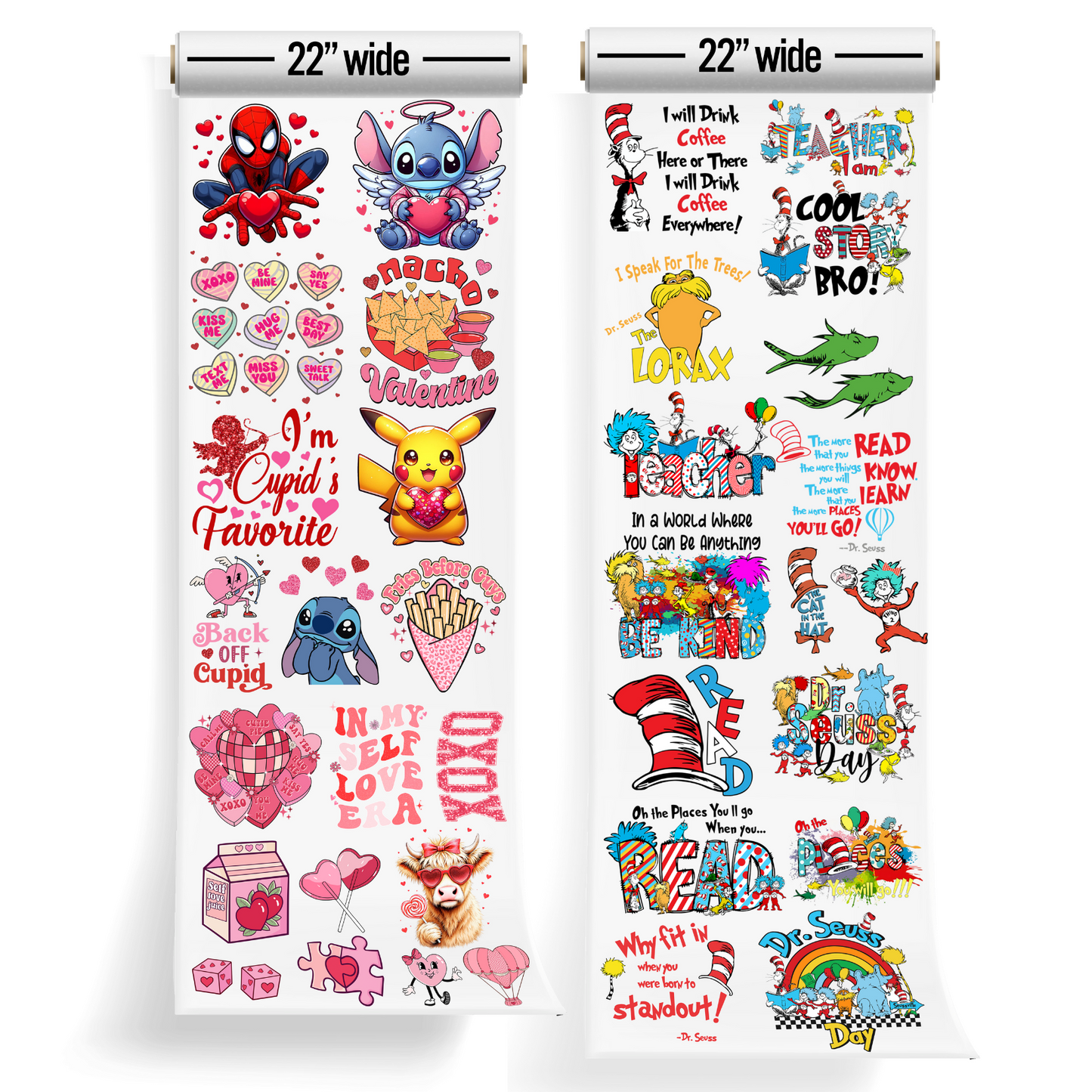DTF Transfer
Pros and Cons

Pros
Unlike other printing methods, DTF (Direct to Film) allows for an unlimited range of colors at the same cost, regardless of the quantity. Additionally, the quality and vibrancy of DTF prints are superior to those of other printing techniques.
DTF printing is incredibly versatile, making it suitable for a wide range of applications. It can be used on various materials, including cotton, polyester, blends, and even more difficult-to-print surfaces like leather or nylon. This flexibility allows for a variety of products, from custom apparel like t-shirts and hoodies to accessories such as bags, hats, and even home décor items. Whether you're working with light or dark fabrics, DTF printing adapts to both, providing vibrant, high-quality designs. Its ability to print intricate details and complex color gradients on different substrates makes it a go-to option for businesses looking to expand their product offerings while maintaining top-notch print quality.
DTF printing is renowned for its impressive durability, making it an ideal choice for products that need to withstand frequent wear and washing. The prints are highly resistant to cracking, peeling, and fading, even after multiple machine washes. The special adhesive layer used in the process ensures that the design bonds securely to the fabric, providing a long-lasting finish that maintains its vibrancy over time. This resilience makes DTF printing perfect for items like clothing and accessories that are subject to regular use, offering a superior alternative to other printing methods that may show signs of wear more quickly. Whether for custom apparel or promotional products, DTF prints retain their quality, making them an excellent investment for both businesses and customers.

Cons
One of the considerations with DTF printing is that the application of heat and pressure during the transfer process can sometimes impact the texture or feel of the material, particularly on more delicate fabrics. For instance, fabrics like silk, thin polyester, or stretchable materials can be more sensitive to the heat and pressure required to bond the ink and adhesive. Excessive heat can cause the fabric to shrink, distort, or lose its softness, while too much pressure may create marks or uneven surfaces. This means that careful attention is needed when selecting materials for DTF printing, as the wrong combination of fabric and transfer settings could negatively affect the quality of the final product. Testing different fabric types before large-scale production is recommended to ensure the prints not only adhere well but also maintain the desired texture and feel of the fabric.
DTF printing is ideal for almost all projects, but some designs may not perform as well. Designs with fading or transparent elements can be challenging, as the entire design area requires a white backing for the printing process. To achieve a similar effect, we recommend replacing fading with halftoning, which works better within the limitations of the process.
CMYK (Cyan, Magenta, Yellow, and Key/Black) is a subtractive color model that cannot produce the full spectrum of colors visible to the human eye. Certain colors, like bright greens, vibrant oranges, or deep blues, may not be accurately reproduced. This is because CMYK is limited in the range of colors it can mix and produce, which may result in slight shifts when compared to the intended color.


